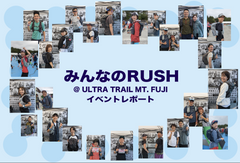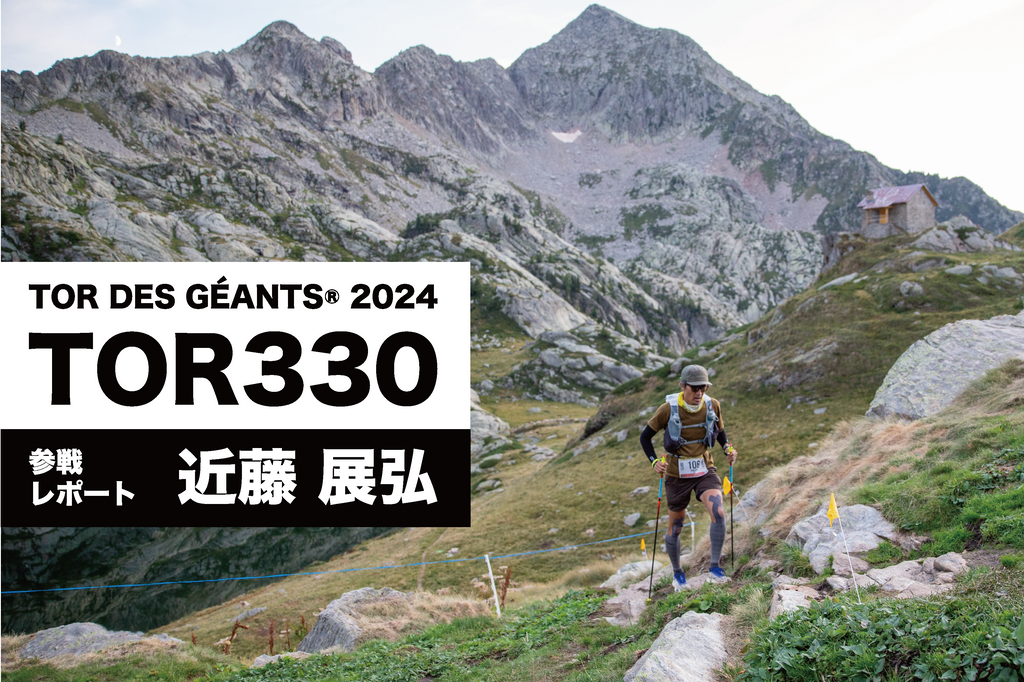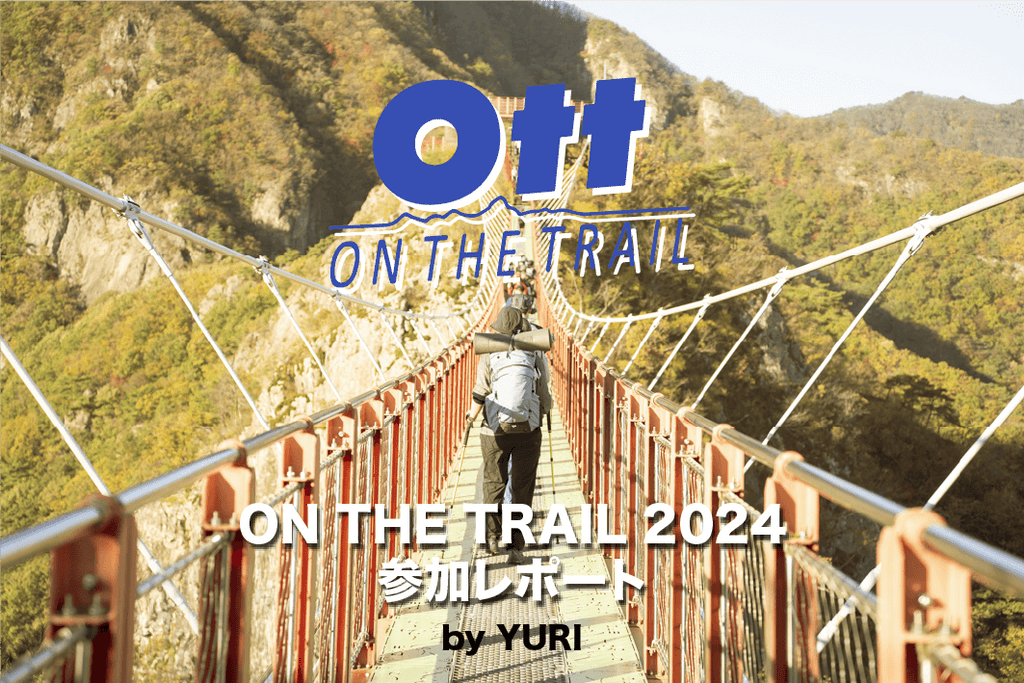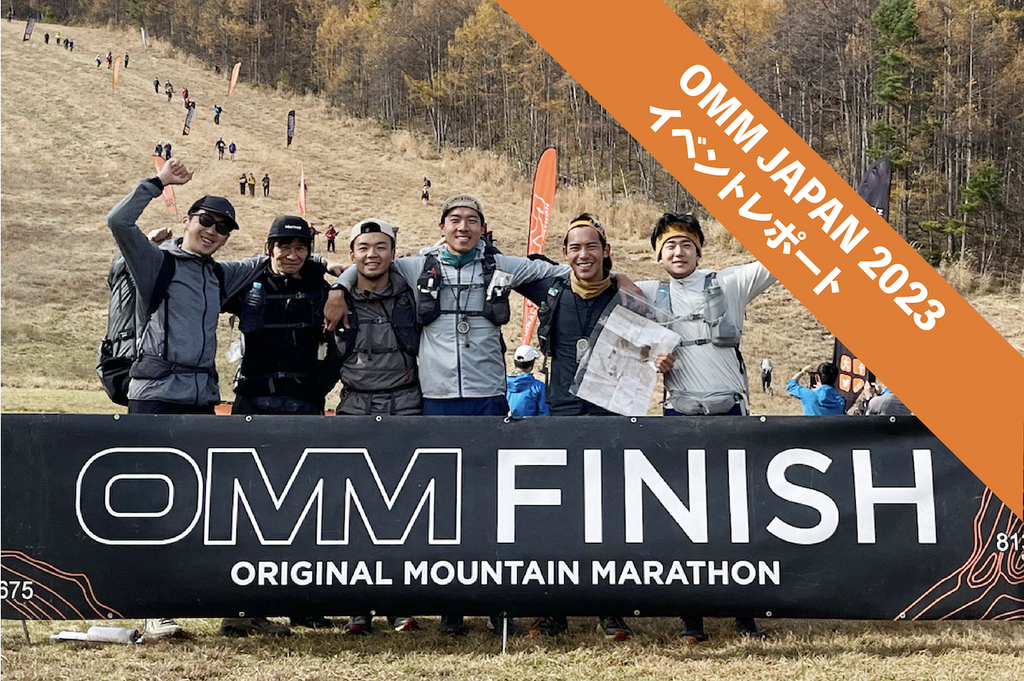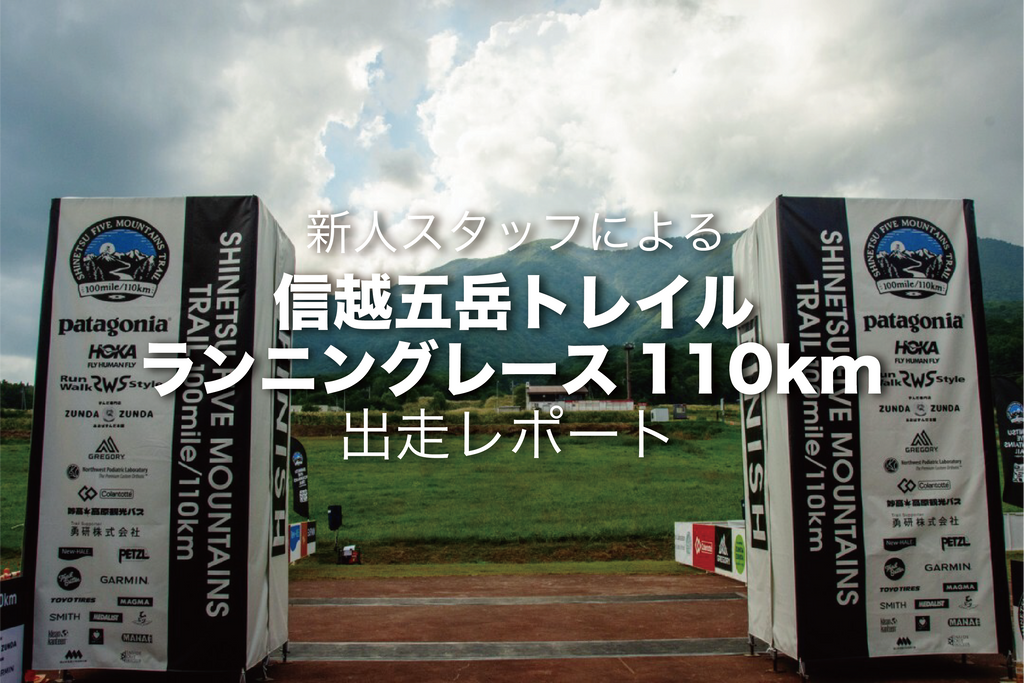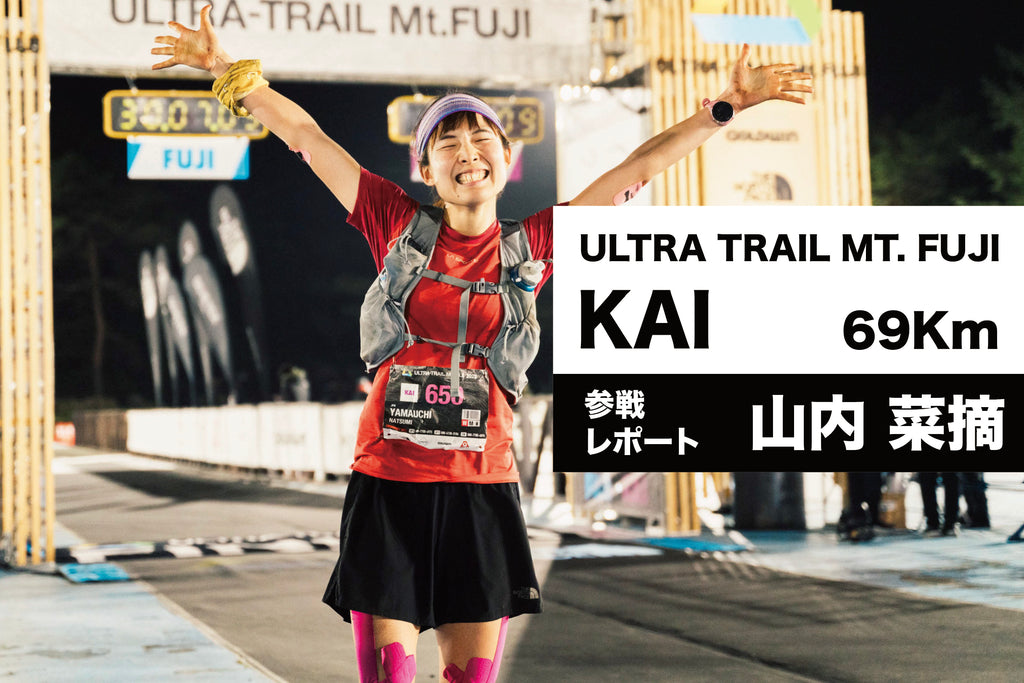MAGAZINE
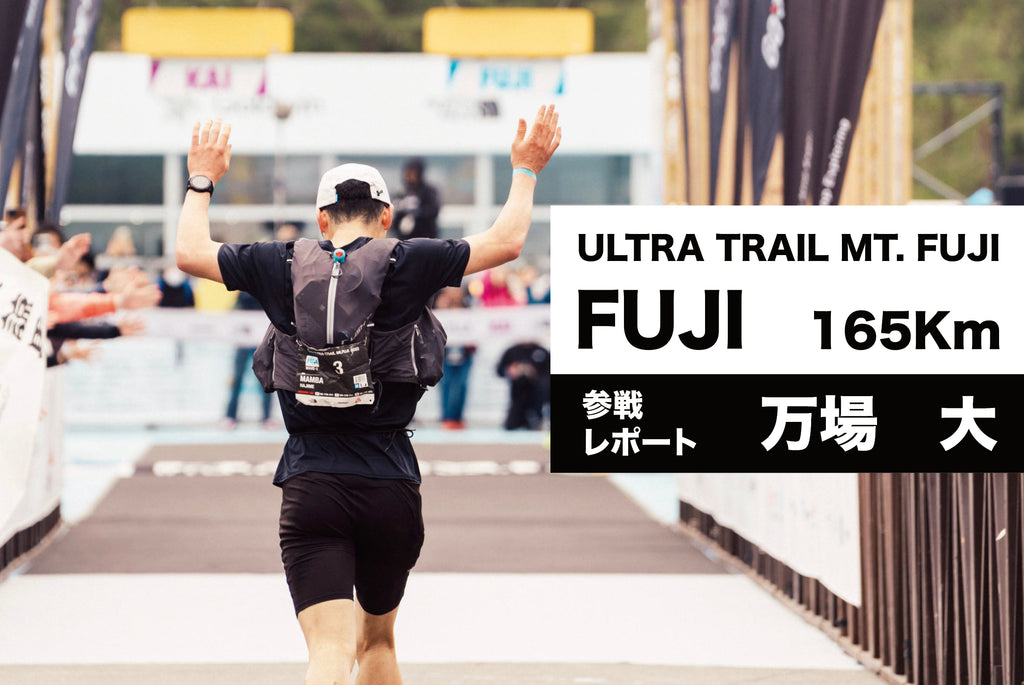
ULTRA-TRAIL Mt.FUJI/Participation Report (Banba Univ.)
UTMF in 2023 will be held with participants from overseas as before the corona disaster. As usual, there were two races, 100 miles and 69k, but the names were changed to "FUJI" and "KAI" respectively. This race report will be delivered in an interview format!
FUJI: Interview with Dai Banba
Dai Mamba, who won 3rd place in the 2022 UTMF and was a hot topic in this race. Despite suffering from stress fractures in both legs in February, he finished in 4th place with a time of 21 hours, 24 minutes and 7 seconds. After the race, we asked about the whole process of running!


Profile of Dai Mamba
He started lifting weights when he was in high school and continued to build muscle in the gym until he was 28. On the other hand, he started mountain climbing at the age of 18, entered the world of running when he won the Kobe Marathon lottery at the age of 21, and started trail running at the age of 22. UTMF is my immediate goal, and this is my 6th challenge. In 2022, he won the OSJ ONTAKE 100 100km, finished UTMB Mont-Blanc in 27th place, the highest among Japanese athletes, and finished 2nd in the Hasetsune double 132k. In 2023, he finished the Tarawera Ultramarathon 100mile in February in 15 hours 11 minutes and placed 2nd overall. there is
- Continuing from last time, all the staff were nervously checking the situation for this race. Looking at Mr. Mamba's expression, it seemed like he was progressing indifferently, but how was it when you looked back at the whole thing?
My honest impression is that the temperature was high this time, and the painful time was long anyway. I have set a target time of 19 hours and 30 minutes, and if I hadn't been injured, I think I would have passed 20 hours. I was straining to reduce the impact on my feet when I landed, and I couldn't get up to speed even when climbing. On the other hand, it gave me confidence that I could run this far even though I was injured.
―I was surprised to hear about the fractures in both legs, but it was also a shock to participate as planned! Didn't you think of giving up?
Well, I think it was a big part of the coverage of The Great Race (NHK's documentary program) (laughs). People at work support my activities, which makes me very happy and encourages me. Television is the media that people at work and their families can watch, so I have to work hard to appear. But I was determined not to overdo it.
―It was also impressive that you stayed so short that you thought you had entered the war without support, even with aid, but you were gone. Please tell me what kind of strategy it was.
We decided not to support each other so that we wouldn't have to worry about each other. In addition, in order to shorten the time by 1 minute, it is more effective to shorten the stay time of the aid than to increase the pace, so the aid supply is only 2 bananas, and don't forget to replenish water. I made sure to open the lid of the flask when the aid approached. There are only two things to do, so aid work doesn't take much time (laughs).
The supplementary food I had in my rucksack at the start was 26 powdered candy gels (32 were added from the drop bag on the way), Midori Anzen's salt heat supplement, and 5 MCT oil jelly. Only foods that can be eaten without chopsticks and foods that can be eaten without processing. I refilled the gel once every 25 minutes on the trail and threw away the empty pack at the aid. It was hot, so I ate all the salt heat supplements I had, and added some with Aid. There were no bananas at Lake Motosuko Aid, so I ate Minobu manju.
Not limited to this time, I have almost no experience with gastrointestinal troubles, and because it is FUJI, I have never prepared anything special. Speaking of what I am careful about, I think that I usually cook three meals for myself in consideration of nutritional balance.
The early stage when the heat was tough. The pace of running out of water was faster than usual

―How was the situation from the start to F1 Fujinomiya, F2 Fumoto, and F3 Motosuko?
Right after the start, the forest road continues downhill, so it's easy to run, but this time it was really hot and I was running at a pace of about 4 minutes and 30 seconds per kilometer. It's about the pace of a regular jog. I arrived at the first Fujinomiya Aid in 1 hour and 56 minutes.
In the beginning, climbing the Tenshi Mountains (Mt. Tenshigatake, Mt. Chojagatake, and Mt. Kumamori) was tough. It was sunset around Mt. Kumamori, but the temperature did not drop, and I was sweating a lot before arriving at Fumoto Aid. I usually take salt heat supplements once every 30 minutes, but I take 2 tablets every 15 minutes or every 10 minutes. , there was also the risk of dehydration. There was no wind on the ridgeline, and the small ups and downs continued, so I couldn't help but worry about whether there was enough water rather than the condition of my legs.
I felt dehydrated at Fumoto Aid, so I decided to drink 1 liter of water. I didn't really feel any decline.
"FUJI" starts at Mt. Fuji Kodomo no Kuni (Fuji City), goes clockwise through Fuji-Q Highland (Fujikawaguchiko Town/Fujiyoshida City), Yamanakakohan (Yamanakako Village), and finishes at Fuji-Q Highland for a total of 164.7km (cumulative Elevation: +6,451m / -6,493m) course. The 2,400 competitors will start in four waves of 600 each. The first wave will start at 14:30 on Friday 21st April, followed by the final 4th wave at 15:15 with 15 minute intervals. The time limit was set for 11:30 on Sunday 23rd for each wave, and 44 hours and 15 minutes for the fourth wave.


―From Motosuko to Shojiko, you seem to have a unique running style where you don't raise your legs compared to other players.
I think it was because I was worried about landing hard due to the stress fracture, so I was trying to "put my leg down." I planned to do my best on the climb because I couldn't do my best on the descent, but it was different from my usual run. It was a page that I couldn't convince myself. Even at Shojiko Aid, I replenished two bananas and water and left quickly.
At Fuji-Q Highland Aid, I sat down for 5 minutes and took a rest. I always drink an energy drink in the middle so that I don't get sleepy. After that, I took 2 Amino Vital Jelly, took out the powdered candy gel from the drop bag and put it in the front pocket of my rucksack before leaving.
F6 Oshino ~ F7 Yamanakako Kirara ~ F8 Changes in stalemate at Nijumagari Pass
Mr. Onizuka caught up with me on the road right after Oshino Aid, and after that we ran together for a long time. While talking about various things such as the previous course and work. Basically, I want to run alone, so it was the first time I ran with another athlete for a long time. I was saved because the pace was right and I was tired.
At Lake Yamanaka Kirara Aid, Mr. Onizuka told me that there were two bananas and cola, so I also took cola.
Yamanakako Kirara Aid ran side-by-side with Mr. Onizuka, who caught up with Mr. Onizuka at Mt. Ohira even though he left first. The sun came out around here and it became bright, but it was a mentally tough section for me. It was a section with continuous ups and downs, so we got through it while encouraging each other.
Running side-by-side with Mr. Onizuka was a mental support. If I was alone, I might have walked. Rather than fighting with Mr. Onizuka for 3rd or 4th place, it felt like the two of us were running away from the runners in 5th and 6th place.


It was a long climb from Nijumagari-toge to Mt. Shakushi, so I felt like I was pulling Mr. Onizuka. From the moment I rang the bell and told him to go ahead because it was a downhill, I couldn't keep up with him and the gap suddenly increased.
After that, after entering the road, I ran at a slow pace, and the 3.6km climb of Shimoyama was 600m up. I was running with my body braking too much all the time, so my hip joints were sore and I felt pain all over my body.
I had an 18-minute gap with the runners behind me, so I was confident that I would finish in 4th place, but I decided not to walk and managed to keep running. The road from Mt. Tenjo to Fuji-Q Highland is bad, so I was careful not to fall.
In front of the goal, I was finally relieved of my tension

―Family members were cheering us on with handmade fans! It's high quality and I've watched it many times.
That was half embarrassment, half happiness (laughs).
When I entered Fuji-Q Highland, I felt a sense of relief from the feeling that "it's finally over" because this race had been a long and painful time, and I was happy to see the supporters near the finish line. Many volunteers called my name and I got excited.

―You won top prizes even though you weren't in perfect physical condition, and you're preparing for the UTMB Mont-Blanc in August!
At FUJI this time, I was keenly aware of the importance of conditioning.
I really want to win this year's UTMB Mont-Blanc, so I'll train until the last minute and stay in perfect physical condition.
―Please give a message to those who are aiming for UTMF and those who are aiming for UTMF in the future.
I think it's important to practice every day without lying, and to keep going for 45 hours without giving up. I would also like to say that FUJI's sense of accomplishment is exceptional. I think it will be fun if you run while thinking about what you want to do after reaching the goal. Before the start, my goal was to reach the goal as early as possible, take a bath, and go to sleep. I wanted to feel refreshed quickly (laughs).
I feel restless and anxious before the race, but I think the best thing to do is to go to bed early.

Even on the day of the interview, only a few days after the race, Mr. Mamba was still working in the morning. Even though they are recording good results one after another, their relaxed and friendly atmosphere makes me feel like they are just like us (but not) normal people (but not), and I feel a sense of closeness to them. is. UTMB Mont-Blanc is nothing but fun!
Current equipment list

